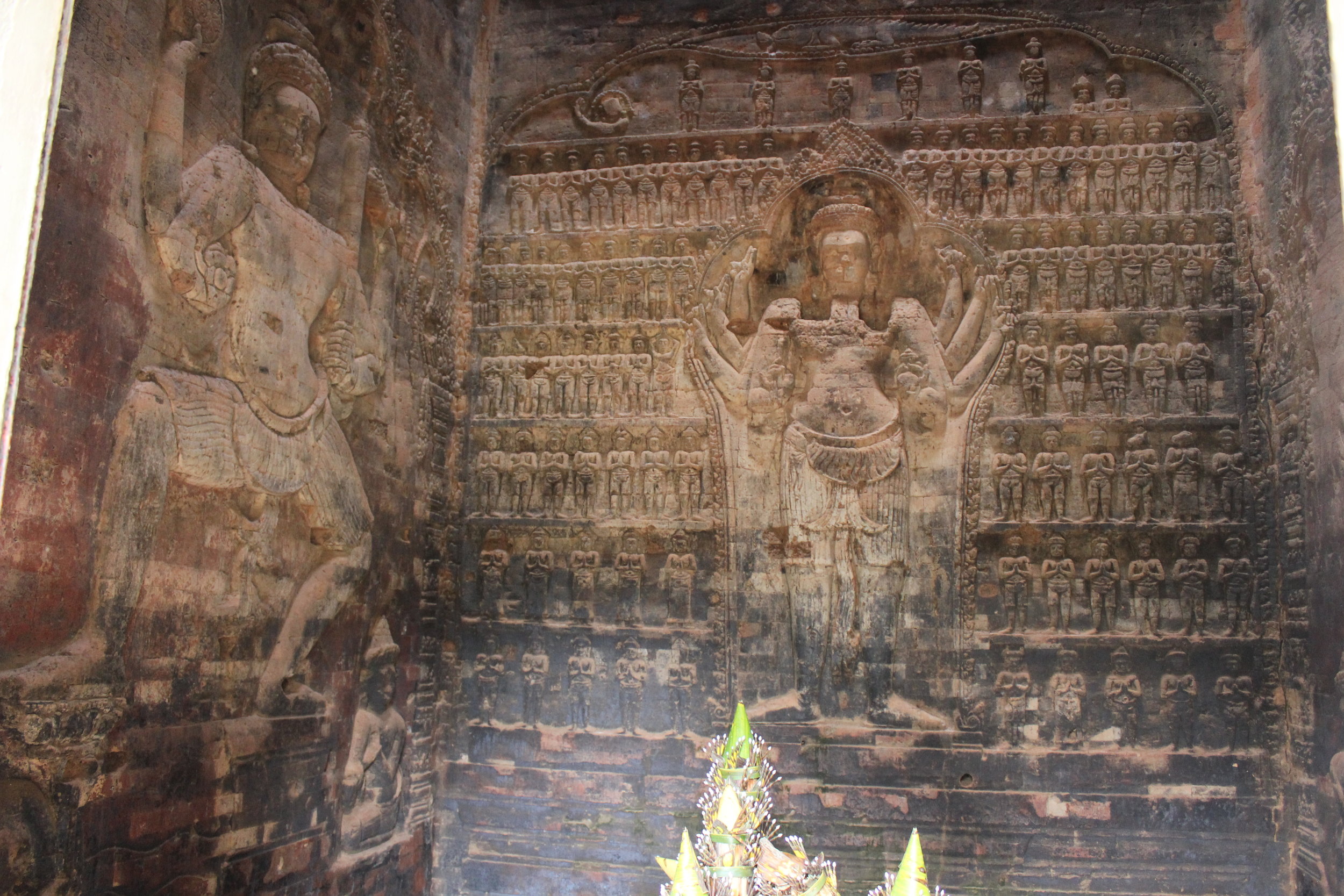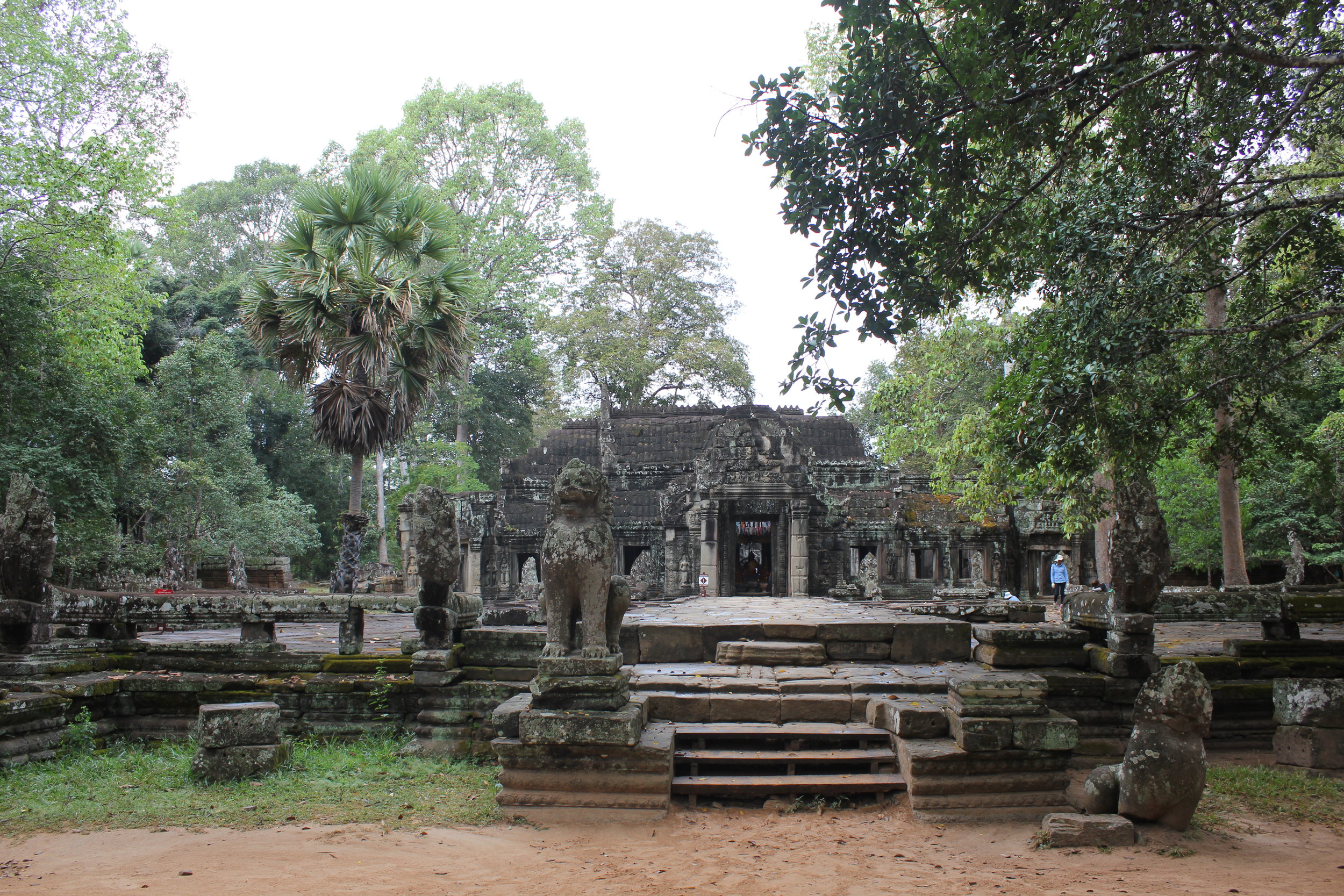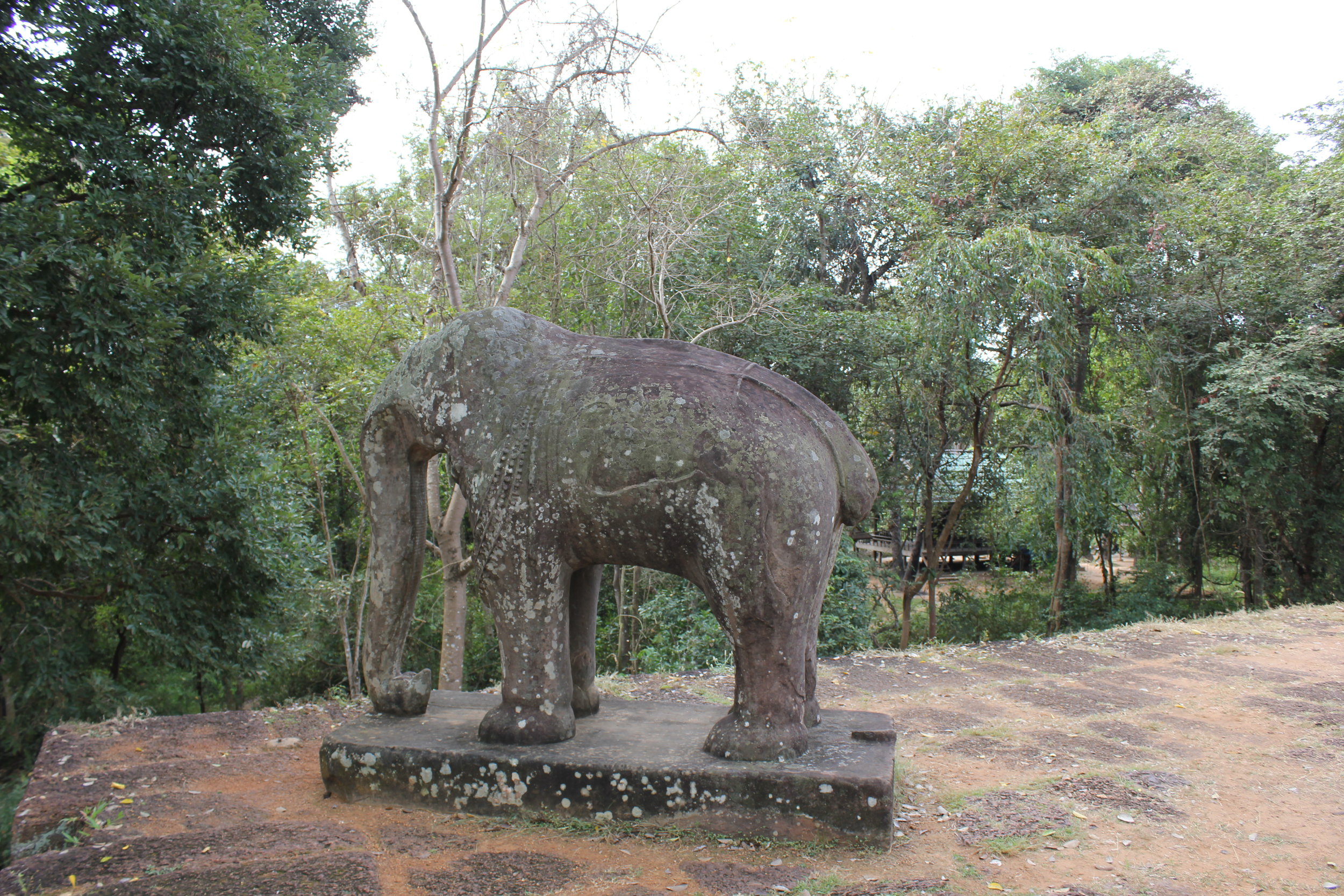How to get the most out of a day in Angkor Archeological Park
Angkor Archeological Park is kind of an interesting place.
Kind of…it’s freaking gorgeous and insanely interesting!
This is Day 1 of the two days we spent exploring the park. Day 2 featured the "Tomb Raider movie temple," and some gorgeous Cambodian countryside to see two more temples more than 30 miles outside the ancient city. This is featured in the next post : )
Day 1
The backdrop of Angkor Archeological Park begins with the Khmer Empire which lasted from 802 to 1431. This empire resided within this area, which is about 10 km from the city Siem Reap in Cambodia. Angkor was the capital of the Khmer Empire, and was very powerful, and very wealthy for that time period.
During its peak from the 11th to 13th centuries, the Khmer empire was the largest preindustrial urban center in the world. This was made possible by water management systems that helped to create three rice harvests per year.
Initially, the Hindu religion reigned supreme, and temples were built to honor their Gods and Goddesses. Later on in the 12th century, Buddhism practices swept through, and temples were built to inspire inner and outer peace (also flouting King Jayavarman’s II power). These were periods that saw many of the temples built that you see today in Angkor Park, but at times at the expense of society and other civic projects.
How to spend your time in Angkor Park:
Get a bloody Tuk Tuk driver. They’re brilliant, friendly, and how much fun is riding in a tuk tuk all day long?
8AM pick up and right to the ticketing office for a 1, 3, or week pass into the Angkor Wat National Park. There are ticket checkers at every temple, so don’t try to cheat the system.
Our tuk tuk driver parked in the front of all the tourist buses, hopped out, and pointed us into the correct 3-day pass line. Not that we couldn’t do it ourselves, but that wasn’t the way Mr. Sambo operated. He takes care of all of his guests. Thanks Mr. Sambo!
To get in to the National Park, there’s a ticket check before you even see any of the temples. From here, you can choose the “Big Circuit,” or the “Small Circuit.” We covered the entire Big Circuit, and a couple stops into the Small Circuit for Day 1. And WHAT a first day it was!
Our first three temples were maybe to ease us into temple galore, but we were star struck immediately.
Prasat Kravan:
Year constructed: 10th Century
Religion: Hindu
Significance: Dedicated to Vishnu (God of Preservation and Protection) also a part of the Hindu Holy Trinity (Shiva, and Brahma).
This was our first stop. Walked through the ruins and wondered where do we begin?
There's not much too this temple. The three small towers are ornate, but it's not until you walk closer that you find how special this spot actually is. Inside the sanctuary’s interiors, you’ll notice particular bas-reliefs (a carving in which shapes are carved so that they are only slightly higher than the flat) of delicate depictions of Vishnu and Lakshmi (Goddess of wealth, fortune, and prosperity). I honestly didn’t know what to expect, and I saw this, and was taken aback. Wow. This is special. And this occurred 1,100 years ago in the exact same spot I’m standing now, and still looks fabulous. Temple number 1.
Banteay Kdei
Year constructed: Mid 12th Century
Religion: Buddhist
Significance: Also known as, “Citadel of Chambers” or Citadel of Monks’ cells.” Built in the Bayon architectural style.
Some people put up a wooden fence. Or, you can opt for a massive, beautifully constructed outer wall made of laterite stones, neatly fit with Gopuras (monumental tower, usually ornate at the entrance of any temple) complete with your very own lokesvara face, and other sculptures neatly fitted into the rock. Insane! Look at it! Even still, there’s a Garuda image depicting a mythical bird like creature you’ll see when you look behind after you enter!
Ok.
Walking beyond the gate, you are immersed within an enchanting forest on each side of you. It’s humid, it’s green, you can hear birds and insects, you can feel it.
Ahead, you see the temple approaching, neatly tucked underneath large trees giving it shade. One lion like figure is still positioned on the left, while the other on the other side is missing.
You don’t realize it at first, but you’re actually looking at a Buddhist monastic complex, and isn’t composed of just a single temple, but actually three enclosures within that large compound wall.
The first stage of the complex is a neat little chamber of worship. A little buddha statue sits in complete nirvana, while people kneel and pray, and light incense to bring good spirits. All around this chamber, and around the complex are really intricate, unique sculptures and frescoes.
The rest of the temple is literally just like walking through an open air art Gallery. It’s really impressive. The Gopura’s are within the temple structure itself, and around 8 meters. Cracks in the top reveal sunlight breaching through. Feces on the floor, reveals bats awaiting at the top.
Outside the back entrance, a white majestic tree stands tall contrasting the vibrant green that surrounds it. It. Was. Beautiful.
Needless to say, my favorite temple.
Also to the east, lies a man made lake created back in the 10th century that was suited only for “royal bathing.” Only the King, and his wives were allowed in. Some stone structures serenaded them coming in and out of the pool.
Pre Rup
Year constructed: 10th Century
Religion: Hindu
Significance: Built as the state temple of Khmer King Rajendravarman. It’s made as a Khmer “temple mountain” that acts as a representation of Mount Meru (the home of the gods in Hinduism), and also dedicated to the Hindu God Shiva.
Being a temple mountain structure, we were happy to walk up the stairs to overlook the grounds. Walking up, we were greeted with two lions perched, and facing outwards. Three towers stand at the top reaching to the sky.
We were able to reach the next temple by walking.
East Mebon
Year constructed: 10th Century
Religion: Hindu
Significance: Dedicated to the Hindu god Shiva. This temple was built to align with Pre Rup as a nod to the parent’s of the king.
This temple is also built similarly to Pre Rup. Statues of elephants sit on two of the corners. Sandstone, brick, laterite, and stucco were all used as available construction materials the Khmer Empire utilized. The staircase to the upper terrace of the main temple allows the imagination to run wild thinking what it would have been like to stand here when it was newly built.
Tam Som
Year constructed: 12th Century
Religion: Kings just doing crazy things
Significance: Dedicated by the King to his father a former king
Just a small little guy whose main attraction is the tree growing around and over the temple. Lots of photo ops take place here, which always takes away from the experience. On the other side of people taking pictures of the tree, is actually a more photogenic point. It’s facing the gopura with a Bayon style face, and the tree looks like it’s sticking out the top! Pretty great.
Neak Poan
Year constructed: 12th Century
Religion: Hindu
Significance: Located on an artificial island, this temple was constructed to represent “Anavatapta” a mythical lake in the Himalayas whose waters are thought to cure all illness.
We were dropped off, and told to walk along the boardwalk until you enter the Temple grounds. The temple lies in the middle of the main pond, and is surrounded by four other ponds. These ponds represent Earth, Wind, Fire, and Water. Four chapels also represent the entrances to these four ponds, as Elephant, Bull, Lion, and Horse. The bull got the shaft however on this one, as the human head is represented instead of a bull’s.
Preah Kahn
Year constructed: 12th century
Religion: Hindu/Buddhism
Significance: Constructed for King Jayavarman VII to honor his father.
This was a large construction spreading over a vast amount of area with pillars erected to act as tunnels to get through the specific areas. There are successive galleries around the buddhist sanctuary, with Hindu temples spread about.
This structure was built after King Jayavarman’s men defeated the Chams trying to invade. As it was so large, it held many civic duties to the Empire. Even a buddhist university was held here, and at one time holding near 100,000 attendants, servants, dancers, and teachers. A lot of precious jewels were stored here, as well as shrines scattered for certain people.
Angkor Thom:
Significance: Angkor Thom (12th century) was the last and most enduring of the capital cities from the Khmer reign. Within Angkor Thom lies several monuments, temples, the Bayon, and other major sites located around their “Victory Square.”
Angkor Thom is surrounded by a great wall, with massive entrance gates. Going through, we had to snap a quick pic thanks to Mr. Sambo.
Entering into the ancient city, you can visualize how it operated as a functional kingdom. The space is massive. There was also a prior kingdom located within the same area three centuries prior. Temples are still seen today, as Baphuon and Phimeanakas. Phimeanakas was incorporated into the Royal Palace.
Ah, Bayon. This temple within the city has no wall or moats surrounding it, as that was taken care of by the major wall around the city. A little temple for the urbanites all to themselves.
The outer gallery depicts historical events and everyday life. Bas-reliefs would show the Khmer army on the march with elephants, naval battles, Cham warriors, and even market scenes.
The upper terrace is what gives Bayon its name. The “face towers” of the Bayon, each supporting two, three, and most commonly four faces perched within these towers. There are 200 faces total, and they’re all so photogenic.
It’s very easy to walk the grounds, and each pit stop seems more interesting than the last. Khmer Empire’s really knew how to hang out in style. At the height of its reign, it would just be majestic. That that it isn’t now, but in its full glory, it would be a site to see.
Phnom Bakheng
Year constructed: 9th century
Religion: Hindu & Buddhist
Significance: Dedicated to the Hindu God Shiva. This was constructed as one of the first temples in the region, dating back to the 9th century.
So this is all a true story thus far. So far what’s been written has happened in all in one day. And then Mr. Sambo asked us if we wanted to climb the “Mountain Temple” in the middle of the day when the temperature read (I checked when I got back) 111 degrees F. “Yes, of course we want to go!” Nuts.
Mr. Sambo dropped us off, and climb up a large “mountain” we did. It wrapped around a pathway large enough for elephants to go up, and you can actually take an elephant up if you wanted to pay the money. We did not (respect your elephant riding). It was all in the shade, and had little lookout points, which was nice.
Getting to the top of the mountain, there stood Phnom Bakheng. Sunny as...well, you know.
We trudged up the temple stairs, careful to not fall back, and kill ourselves. If you’ve read along, you would know that mountain temples are a representation of Mount Meru, home of the Hindu gods. It’s built in pyramid form, and the top level consists of five sandstone sanctuaries.
One of the lookout points overlooks Angkor Wat, which I whipped out the handy telephoto lens to snap a pic of. With Angkor Wat being in view as around the point when the sun goes down, Mr. Sambo let us know it gets pretty insane for sundown and tourists on this site.
I crawled around the top of the temple underneath the sun, and envisioned ice cold lemonade, and ice cream cones. We actually made our way back down, hopped in with Mr. Sambo, he took off, and cooled off with the open tuk tuk : )
Angkor Wat
Year constructed: 12th century
Religion: Hindu and later Buddhism
Significance: Largest religious monument in the world. Started for Vishnu and ended as Buddhist temple. Succeeded the previous capital city with Angkor Thom, as the final Capital of the Khmer Empire.
Still really hot out. Like scorching. But we were good to go.
Walking into Angkor Wat, is like heading into a golf clubhouse, or a really nice resort. It’s all very well manicured, and surrounded by a moat.
It’s designed under two styles as a temple mountain, and also "galleried" temple. This is a massive temple. Tons of people were walking around, and there was tons of space for everyone to be walking around. Its many towers show its prominence, and the many bas-reliefs showcase its artistic talents. The statues of lions and naga’s (mythical serpent creature) also stood tall.
Angkor Wat beamed with pride, and significance. Its no wonder why Cambodia put the temple on their national flag.
Awesome experience.








































































